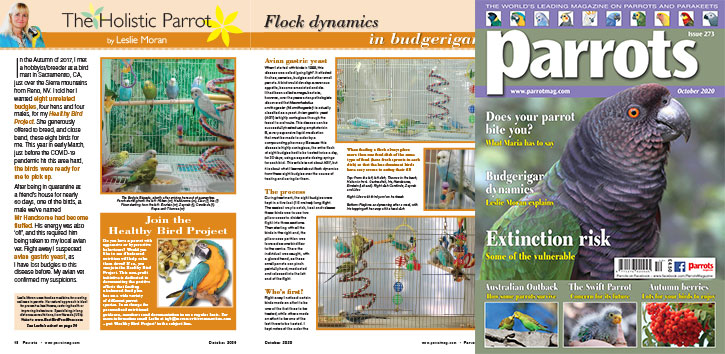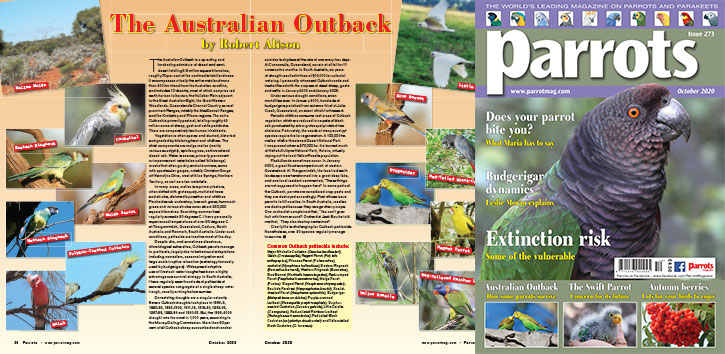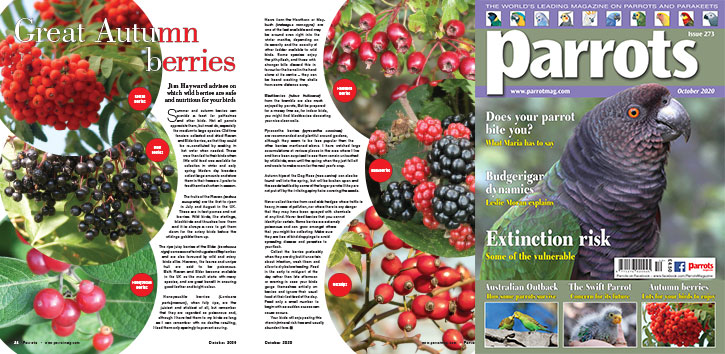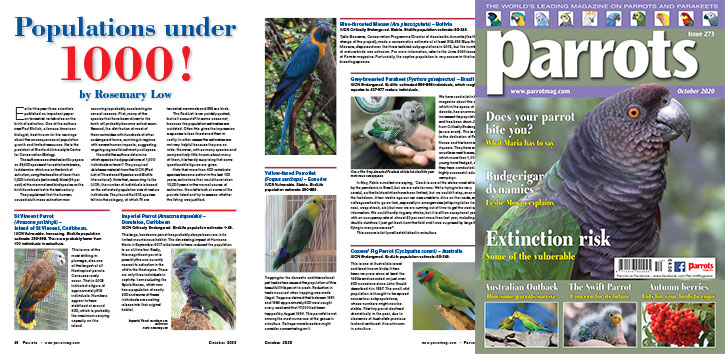
The Holistic Parrot by Leslie Moran
In the Autumn of 2017, I met a hobbyist/breeder at a bird mart in Sacramentto, CA, just over the Sierra mountains from Reno, NV. I told her I wanted eight unrelated budgies, four hens and four males, for my Healthy Bird Project. She generously offered to breed, and close band, these eight birds for me. This year in early March, just before the COVID-19 pandemic hit this area hard, the birds were ready for me to pick up.
After being in quarantine at a friend’s house for nearly 60 days, one of the birds, a male we’ve named Mr Handsome had become fluffed. His energy was also ‘off’, and this required him being taken to my local avian vet. Right away I suspected avian gastric yeast, as I have lost budgies to this disease before. My avian vet confirmed my suspicions.
When I started with birds in 1998, this disease was called ‘going light’. It affected finches, canaries, budgies and other small parrots. A bird would develop a ravenous appetite, become emaciated and die. It had been called a mega-bacteria, however, over the years avian pathologists discovered that Macrorhabdus ornithogaster (M. ornithogaster) is actually classified as a yeast. Avian gastric yeast (AGY) is highly contagious through the faecal to oral route. This disease can be successfully treated using amphotericin B, a very expensive liquid medication that must be made to order by a compounding pharmacy. Because this disease is highly contagious, the entire flock of eight budgies had to be treated twice a day, for 30 days, using a separate dosing syringe for each bird. This article is not about AGY, but it is about what I learned about flock dynamics from these eight budgies over the course of treating and caring for them.
Buy Now!

by Robert Alison
The Australian Outback is a sprawling and foreboding admixture of desert and semi-desert totalling 5.6 million square kilometres, roughly 70 per cent of the continent’s total landmass. It encompasses virtually the entire mainland more than 200 km inland from the Australian coastline, and includes 10 deserts, most of which comprise red earth horizon to horizon, the Nullabar Plain adjacent to the Great Australian Bight, the Great Western Woodlands, Queensland’s Channel Country, several prominent Ranges, notably the MacDonnell Ranges, and the Kimberley and Pilbara regions. The entire Outback is primarily pastoral, totalling roughly 42 million acres of sheep, goat and cattle paddocks. There are comparatively few human inhabitants.
Vegetation is often sparse and stunted, distorted and gnarled by blistering heat and wildfires. The chief components are mulga mallee (mainly various eucalypts), spinifex grass, corkwood and desert oak. Water is scarce, primarily permanent or impermanent waterholes called ‘billabongs’, creeks that often go dry, and a few rivers, some with spectacular gorges, notably Ormiston Gorge off Namatjira Drive, west of Alice Springs, Northern Territory, as well as a few waterfalls.
In many areas, mallee is a primary feature, often dotted with grotesquely-mutilated trees and shrubs, distorted by weather and wildfires. Parched scrub understory, tussock grass, hummock grass and various shrubs cover about 250,000 square kilometres. Scorching summer heat regularly exceeds 50 degrees C. I have personally experienced temperatures of over 50 degrees C. at Thargomindah, Queensland, Ceduna, South Australia and Renmark, South Australia. Under such conditions, psittacids are inactive most of the day.
Buy Now!

Jim Hayward advises on which wild berries are safe and nutritious for your birds
Summer and autumn berries can provide a feast for psittacines and other birds. Not all parrots appreciate them, but most do, especially the medium to large species. Old time fanciers collected and dried Rowan and Elder berries, so that they could be re-constituted by soaking in hot water when needed. These were then fed to their birds when little wild food was available for collection in winter and early spring. Modern day breeders collect large amounts and store them in their freezers. I prefer to feed them fresh when in season.
The fruits of the Rowan (sorbus aucuparia) are the first to ripen in July and August in the UK. These are in fact pomes and not berries. Wild birds, like starlings, blackbirds and thrushes love them and it is always a race to get them down for the aviary birds before the wildings gobble them up.
The ripe juicy berries of the Elder (sambucus nigra) come soon after in August and September and are also favoured by wild and aviary birds alike. However, the leaves and unripe fruit are said to be poisonous. Both Rowan and Elder become available in the UK as the moult starts with many species, and are great benefit in ensuring good feather and bright colour.
Buy Now!

by Rosemary Low
Earlier this year three scientists published an important paper on terrestrial vertebrates on the brink of extinction. One of the authors was Paul Ehrlich, a famous American biologist, best known for his warnings about the consequences of population growth and limited resources. He is the president of Stanford University’s Centre for Conservation Biology.
The authors researched scientific papers on 29,400 species of terrestrial vertebrates, to determine which are on the brink of extinction, using the baseline of fewer than 1,000 individuals (estimated). Most (94 per cent) of the mammal and bird species on the brink have been lost in the last century.
They explained that the human-caused sixth mass extinction now occurring is probably accelerating for several reasons. First, many of the species that have been driven to the brink will probably become extinct soon. Second, the distribution of most of them coincides with hundreds of other endangered forms, surviving in regions with severe human impacts, suggesting ongoing regional biodiversity collapses.
How did the authors determine which species had populations of 1,000 individuals or fewer? They acquired database material from the IUCN (Red List of Threatened Species and Birdlife International). Note that, according to the IUCN, the number of individuals is based on the estimated population size of mature individuals. They found that 515 species fell into the category, of which 74 are terrestrial mammals and 335 are birds.
The Red List is very widely quoted, but is it accurate? In some cases not, because the population estimates are outdated. Often this gives the impression a species is less threatened than in reality. In other cases the estimates are not very helpful because they are so wide. However, with so many species and comparatively little known about many of them, it is hardly surprising that some questionable figures are given.
Note that more than 400 vertebrate species became extinct in the last 100 years, extinctions that would have taken 10,000 years in the normal course of extinction. Now let’s look at some of the parrots listed and try to assess whether the listing was justified.
Buy Now!




